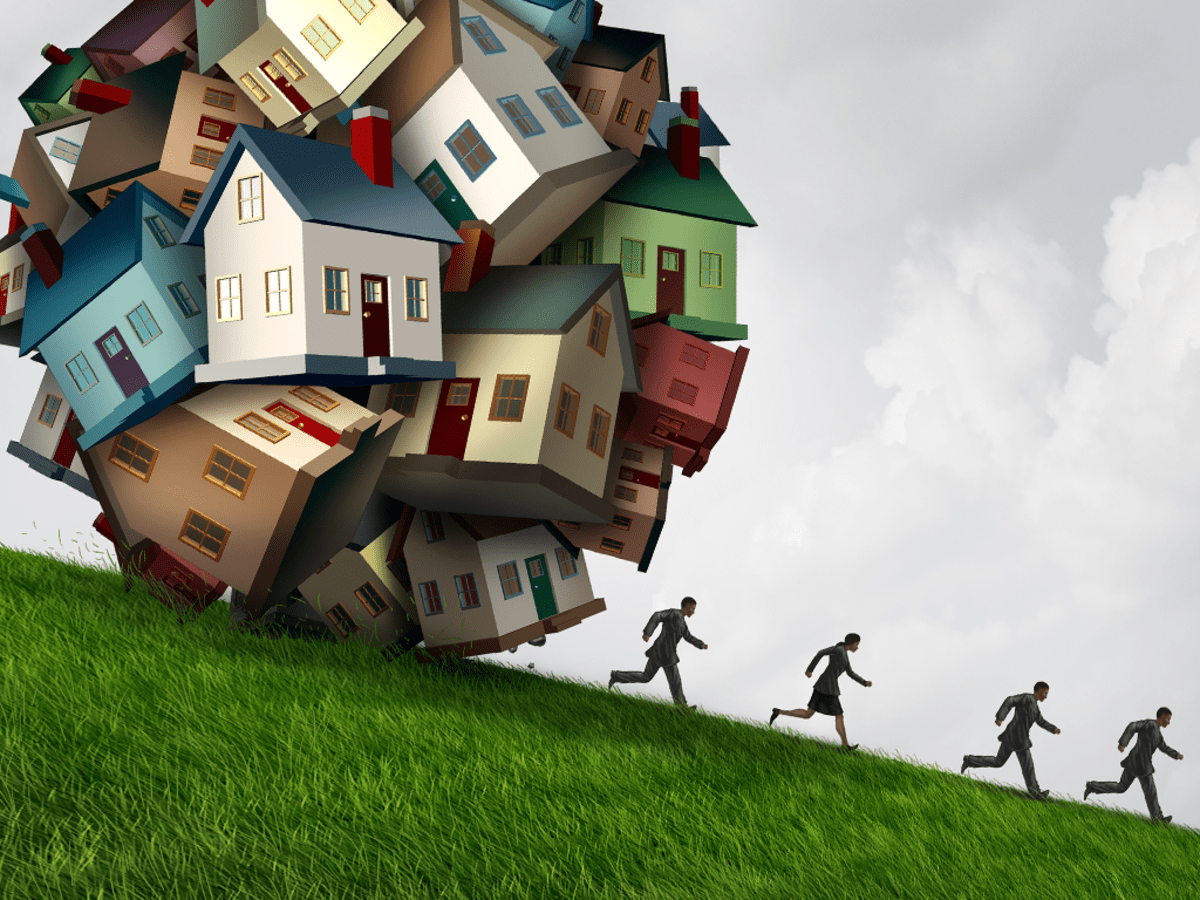The history of the fed funds rate reveals that the Fed raised rates too quick between 2004 and 2006. The leading rate was 1. 0% in June 2004 and doubled to 2. 25% by December (What does a real estate broker do). It doubled again to 4. 25% by December 2005. 6 months later on, the rate was 5. 25%. The Fed has actually raised rates at a much slower pace because 2015. A warning indication for the property market is when theyield curve on U.S. Treasury notes inverts. That's when the rate of interest for short-term Treasurys become higher than long-lasting yields. Typical short-term yields are lower because financiers don't need a high return to invest for less than a year.
That plays havoc with the home loan market and frequently signifies a recession. The yield curve briefly inverted in February and March 2020. On March 9, 2020, the yield on the 10-year note was up to 0. 54% while the yield on the one-month bill rose to 0. 57%. The curve later went back to a regular shape. By Dec. 18, the yield on the 10-year note was 0. 95% while that on the one-month costs was 0. 8%. The yield curve inverted before the economic downturns of 2008, 2000, 1991, and 1981. The housing market responds considerably when Congress alters the tax code.

The strategy raised the standard deduction, Click here! so numerous Americans no longer detailed. As a result, they could not benefit from the home mortgage interest reduction. Because of that, the genuine estate industry opposed the TCJA. Research study has revealed because then that the tax changes had little impact on the real estate market. Decrease in home purchases by middle-income families who took the standard reduction was offset by other earnings groups. The law doubled the basic reduction, providing more income to low-income households who might then pay for a house. High-income households continued using itemized deductions. Other tax cuts likewise made them more able to purchase brand-new houses.
The 2-Minute Rule for What Is A Real Estate Developer
These derivatives were a significant reason for the financial crisis. Banks sliced up home mortgages and resold them in mortgage-backed securities (MBS). Over time, the MBS became a bigger company than the mortgages themselves. So, banks sold mortgages to practically anyone. They needed them to support the derivatives. They sliced them up so that bad home mortgages were concealed in packages with good ones. Then, when borrowers defaulted, all the derivatives were suspected of being bad. This phenomenon caused the death of Bear Stearns and Lehman Brothers. House flipping played a major function during the 2008 recession. Speculators purchased homes, made moderate enhancements, and sold them as rates continued increasing.
4% of house sales. Turning has slowed considerably. In the third quarter of 2020, 5. 1% of all home sales were bought for fast resale. That's below the 6. 7% of sales in the second quarter of 2020. It's likewise lower than the post-recession high of 7. 2% in first-quarter 2019. The decrease in flipping is because of the decreased stock of real estate stock. At the same time, turning has actually become more lucrative. Attom Data Solutions reports that the pandemic's impact on flipping is inconsistent and difficult to forecast. 'Flipped' houses are bought, remodelled, and after that offered in less than a year.
Another sign of a housing bubble is that the availability of inexpensive real estate diminishes. Real estate development overtakes earnings growth. There are signs that this is taking place. In 2017, just 39. 1% of rental units throughout the country were inexpensive for low-income households. That's down from 55. 7% in 2010. The lack is the worst in cities where home rates https://consent.yahoo.com/v2/collectConsent?sessionId=2_cc-session_65e846f9-ac59-4d4d-973f-3c162ae30baf have skyrocketed. In 2019, the typical sales cost of existing single-family houses increased much faster than the median household earnings for the 8th straight year. Regional real estate markets might collapse in coastal locations susceptible to the impacts ofrising water level. A minimum of 300,000 coastal residential or commercial properties will flood 26 times a year by 2045.

Everything about Real Estate What Does Contingent Mean
That affects the worth of 30-year home mortgages presently being composed. How does a real estate agent get paid. By 2100, 2. 5 million houses worth $1. 07 trillion will be at risk of chronic flooding. Properties on both coasts are at the majority of danger. In Miami, Florida, the ocean floods the streets during high tide. Harvard researchers discovered that home rates in lower-lying locations of Miami-Dade County and Miami Beach are rising more gradually than the rest of Florida. Residence at risk of increasing sea levels offer at a 7% discount to similar residential or commercial properties. The majority of the home in these cities are funded by community bonds or home mortgages. Zillow predicts that "although dense, metropolitan living got a bum rap" in 2015 because of the pandemic, "city living will likely enjoy a renaissance in 2021." Residential building and construction was a brilliant spot for the economy in 2020. After a preliminary decline in home builder confidence and building activity in March and April, the outlook for building improved significantly. The NAHB/Wells Fargo Real Estate Market Index, Website link a regular monthly survey that evaluates home builder perceptions of single-family house sales and sales expectations for the next six months, was available in at 86 out of 100 in December, down slightly from the highest reading taped, 90, in November.
House contractors reported continuous strong levels of buyer traffic, yet pointed out supply-side concerns connected to material expenses and shipment times. Availability of land and lots was likewise reported as an obstacle. For 2020 as a whole, single-family starts were up nearly 11 percent over the 2019 total. Renovation was strong across all of 2020. The primary motorists of gains in 2020 were low interest rates and a restored focus on the importance of housing throughout the pandemic. For 2021, NAHB anticipates continuous development for single-family building. It will be the first year for which total single-family building will go beyond 1 million starts since the Great Economic downturn, a 2.